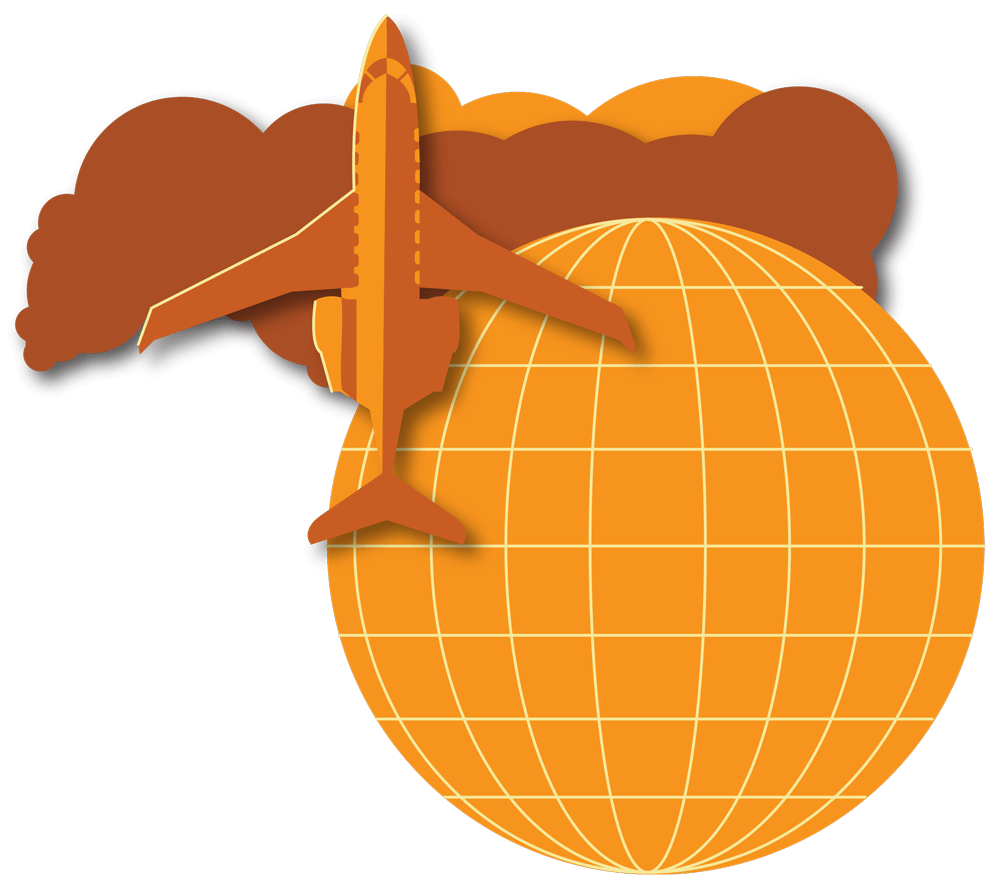Business travel is returning to pre-pandemic levels and experts expect demand for business travel, including international travel, to remain strong in 2023. Here’s the latest information that business aircraft operators, flight crews and schedulers need to know about key regions.
Brazil
 Brazil is facing civil unrest in several cities as the country’s recent election brought a new president to office. Regional experts say the unrest is not impacting business aircraft operations. However, flight crews and passengers should maintain situational awareness and practice good security while in the country.
Brazil is facing civil unrest in several cities as the country’s recent election brought a new president to office. Regional experts say the unrest is not impacting business aircraft operations. However, flight crews and passengers should maintain situational awareness and practice good security while in the country.
“In Brazil, political demonstrations are happening in a decentralized way and are spread across different cities. However, it is not affecting business aviation operations,” said Cynthia C.E. de Oliveira, operations director at Lider Aviacáo.
“The same goes for the other countries in South America. There are no reports of difficulties in accessing airports or stoppages related to general aviation,” said de Oliveira.
Foreign aircraft flying into Brazil or any South American country should still use an experienced third-party handler. Each country’s entry requirements are different, and some documents can only be completed in the native language of the destination company, de Oliveira explained.
“These professionals will have information on the impacts on the operation due to events in real time,” she added.
“It is always important to request in advance to your service provider all the recommendations for safe and smooth travel,” added de Oliveira, especially when considering paperwork, authorizations, vaccinations, visas, overflight permits, required licenses and local issues that can interfere with operations.
“It's always important to request in advance to your service provider all the recommendations for safe and smooth travel. ”
CYNTHIA C.E. DE OLIVEIRA Operations Director, Lider Aviacáo
China
 China’s COVID-19 response, which was one of the harshest in the world, has relaxed in the past few months, allowing international travelers back into the country. Experts say changes implemented just this year mean requirements are now reduced to almost pre-pandemic levels.
China’s COVID-19 response, which was one of the harshest in the world, has relaxed in the past few months, allowing international travelers back into the country. Experts say changes implemented just this year mean requirements are now reduced to almost pre-pandemic levels.
Passengers and any crewmembers planning to stay overnight in China must have a negative PCR test within 48 hours of arrival. Each person entering and exiting the country must complete an Exit/Entry Health Declaration Form. U.S. crewmembers must hold a valid crew visa, and normal visa requirements apply for all passengers.
Foreign aircraft are limited to six legs in mainland China, after which the aircraft must reposition to a third country before returning.
“China’s COVID response is a somewhat fluid situation,” said Doug Carr, NBAA’s senior vice president, safety, security, sustainability and international operations. “Failure to comply with entry testing or concealing information on the Exit/Entry Health Declaration Form can result in additional testing or quarantine, fines or even arrest and detention, so it’s critical to verify current requirements with an experienced handler while trip planning and complete the health form accurately.”
“Although the programs haven’t launched yet, NBAA encourages operators that qualify as a ‘carrier’ and travel to Europe to register for the new eu-LISA programs now.”
BRIAN KOESTER CAM, NBAA Director, Flight Operations & Regulations
Europe
 The 27 countries that now make up the Schengen Area in Europe are launching two new passenger-entry programs. Certain operators will be required to query the new Entry/Exit System (EES) and European Travel Information and Authorization System (ETIAS) to verify details regarding trips in an effort to identify potential risks and security concerns, including serious crimes and terrorism and general visa compliance. These programs fall under the European Union Agency for the Operational Management of Large-Scale IT Systems in the Area of Freedom, Security and Justice, or eu-LISA.
The 27 countries that now make up the Schengen Area in Europe are launching two new passenger-entry programs. Certain operators will be required to query the new Entry/Exit System (EES) and European Travel Information and Authorization System (ETIAS) to verify details regarding trips in an effort to identify potential risks and security concerns, including serious crimes and terrorism and general visa compliance. These programs fall under the European Union Agency for the Operational Management of Large-Scale IT Systems in the Area of Freedom, Security and Justice, or eu-LISA.

A “carrier” is defined as any natural or legal person whose profession it is to provide transport of persons, according to Schengen Border Code article 2.15, although there are still some questions about the applicability of the term “carrier.”
“Although the programs haven’t launched yet, NBAA encourages operators that qualify as a ‘carrier’ and travel to Europe to register for the new eu-LISA programs now,” said Brian Koester, CAM, NBAA’s director, flight operations and regulations. “The registration process is not difficult but does take some time.”
See this edition’s Regulatory Hot Topics column for more details.
Mexico
 The Federal Civil Aviation Agency (AFAC) of Mexico (previously the Directorate General of Civil Aeronautics [DGAC]) increased random ramp inspections of foreign aircraft visiting Mexico and arriving to a list of specific airports from Dec. 20, 2022 through Jan. 20, 2023. Although that focused increase in ramp inspections has passed, Part 91 and Part 135 operators conducting flights to Mexico are still encouraged to be prepared for ramp inspections.
The Federal Civil Aviation Agency (AFAC) of Mexico (previously the Directorate General of Civil Aeronautics [DGAC]) increased random ramp inspections of foreign aircraft visiting Mexico and arriving to a list of specific airports from Dec. 20, 2022 through Jan. 20, 2023. Although that focused increase in ramp inspections has passed, Part 91 and Part 135 operators conducting flights to Mexico are still encouraged to be prepared for ramp inspections.
Many of the requirements align with International Civil Aviation Organization (ICAO) recommendations and should be familiar to most pilots. However, a few key additional documents are required for foreign aircraft flights to Mexico.
For example, Part 91 operators must present a document stating the purpose of the flight, including the name of the lead passenger, and declare the passenger’s connection with the aircraft (owner, employee, etc.). If accompanied by other passengers, the letter must declare the relationship of the passengers with the lead passenger (family, friends, employees, etc.), said Emilio Padilla Escoto, operations control center manager for Manny in Mexico.
“While there is no formal list of requirements to be presented at the time of inspection, those mentioned in the sidebar (see below) are highly recommended. It is very important to be clear that AFAC has not been specific about the aircraft/pilot requirements, so it falls on the criteria of each inspector. They might ask for more or fewer documents than listed here,” Escoto explained.
Failure to comply with any of these requirements can result in a warning or fine per Mexican Civil Aviation Law.

MEXICO DOCUMENT CHECKLIST
Before departing for a trip to Mexico, Manny recommends verifying the following are onboard:
- ✓ Airworthiness certificate
- ✓ Registration certificate
- ✓ Worldwide and/or Mexican insurance (certificates must indicate whether private or charter operations are covered – Part 135 must have both worldwide and Mexican insurance)
- ✓ Airman certificate(s)
- ✓ Airman medical certificate(s), appropriate type of flight and pilot’s age
- ✓ Multiple Entry Authorization, if appropriate, plus payment receipt and crew and passenger lists

MEXICO COMMERCIAL CHECKLIST
For commercial operations, in addition to the items above, verify the following are onboard:
- ✓ Valid Air Operator Certificate (AOC): Copies are acceptable.
- ✓ FAA OST 4507 Form. Copies are acceptable. Alternatively, the appropriate exemption document, Certificate of Public Convenience and Necessity, is also acceptable.
- ✓ If you hold a Mexican Indefinite Blanket Permit (IBP), it should be accompanied by the Mexican AOC and the yearly verification (including payment receipt). Copies are acceptable.
- ✓ Maintenance log. Copies of last page or latest entries are acceptable – originals are not necessary.
- ✓ Aircraft radio station license/authorization
- ✓ Aircraft flight manual
- ✓ Noise certificate
- ✓ Minimum equipment list, if applicable
- ✓ Mexican Aeronautical Information Publication
- ✓ Preflight checklists
- ✓ Weight and balance manifest
- ✓ First aid kit
- ✓ Life raft and/or life jacket, if required by routing
- ✓ Charts appropriate to flight (paper or electronic)
Russia/Ukraine
 Steve Thorpe, an international captain for a Gulfstream operator and former chair of NBAA’s International Operators Committee, shared the impact of airspace closures over Russia and Ukraine. Affected routes include between the U.S. and India, between Europe and Japan, and Europe and South Korea.
Steve Thorpe, an international captain for a Gulfstream operator and former chair of NBAA’s International Operators Committee, shared the impact of airspace closures over Russia and Ukraine. Affected routes include between the U.S. and India, between Europe and Japan, and Europe and South Korea.
Flight crews should plan their routing with extreme care. For example, some routes require exceptionally high minimum enroute altitudes to avoid closed airspace.
Consider your own organization’s tolerance for risk when planning a trip that could be affected by airspace closures.
 Business aircraft operators should also consider where they are comfortable landing in the event of an emergency diversion, whether due to a mechanical issue with the aircraft or a medical emergency. Even polar routes, which might seem like a safe option, are questionable, as many used to rely on Russian airports for diversion locations.
Business aircraft operators should also consider where they are comfortable landing in the event of an emergency diversion, whether due to a mechanical issue with the aircraft or a medical emergency. Even polar routes, which might seem like a safe option, are questionable, as many used to rely on Russian airports for diversion locations.
During an emergency, the nationality of passengers or ownership of the company might impact your organization’s comfort level or willingness to land in a particular country. Asset protection must be considered as well. Are there countries you’d rather not have your business aircraft sitting in while customs and other issues resulting from an unexpected arrival are sorted out?
“Different companies have different tolerances for risk,” said Thorpe, who recommends the following best practices:
Even if Extended Twin Engine Operations (ETOPS) limitations aren’t applicable to your operation, many operations comply with ETOPS as a best practice.
“Basically, consider any place you don’t want to land – such as an ocean – only if you’re on fire. Otherwise, determine equal time points and use them,” Thorpe said.
Also, consider partnering with a third-party medical vendor. If you have a medical emergency in the air, do you know where you’d want to land? Some countries have much better medical facilities with similar flight times. An expert in this area could help save a life.
Review NBAA’s international flying resources at nbaa.org/intl.



 International Business Aviation Council Ltd.
International Business Aviation Council Ltd.